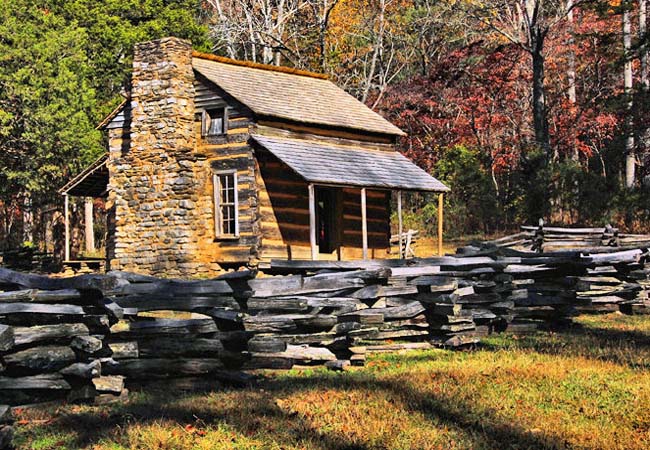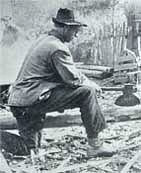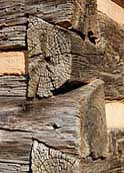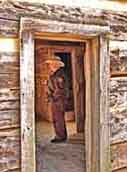|
Scenic USA - Tennessee John Oliver Place |

| Photos by Ben Prepelka Ben Prepelka Photography |
Taking in some of the most rugged terrain of the Appalachian Mountains, the Great Smoky Mountains National Park is one of America's  favorite park destination. The abundance of wildlife, an unmatched collection of historic homes and churches, and a variety of scenic treasures have visitors showing up by the millions.
favorite park destination. The abundance of wildlife, an unmatched collection of historic homes and churches, and a variety of scenic treasures have visitors showing up by the millions.
When the park was established in the 1930s the National Park Service decided to save ninety-seven historic structures, including many log homes and a few frame dwellings, churches and grist mills. The Cades Cove section of the park, with its concentration of century old buildings, is the most heavily visited section of the park. Its eleven mile loop road attracts over two million visitors every year.  This one way driving loop, seeing traffic jams nearly every day, creates extreme pressures on the park's natural surroundings and historic buildings. Please respect our heritage and never add to the unsightly graffiti. This is also bear country ... and although it's common to try for a close-up view and photograph, the NPS has a strict policy against feeding and harassing wildlife.
This one way driving loop, seeing traffic jams nearly every day, creates extreme pressures on the park's natural surroundings and historic buildings. Please respect our heritage and never add to the unsightly graffiti. This is also bear country ... and although it's common to try for a close-up view and photograph, the NPS has a strict policy against feeding and harassing wildlife.
Although much of the park can be seen from your car, a visit to Cades Cove’s historic buildings requires visitors to take short footpaths to these historic treasures. Pictured here is the John Oliver  cabin, built in the early 1820s. One of the oldest structures in the park, the one and a half story log home served the Oliver family for over a century. Notice the hand-hewn logs with their exceptional half-dovetail notched ends (inset). The outward sloping angles helped guide rainwater away from the house, preserving the timbers. Imagine the effort creating over 3000 wooden roofing shingles (shakes) by hand. Cabin doors and windows were small, minimizing the cuts in the sidewalls and helping to conserve heat in the winter. With great fluctuations in temperature, replacing loose chinking between the logs remained a never ending chore. Wilderness living a century ago was not the idyllic life that today's mainstream population naively imagines.
cabin, built in the early 1820s. One of the oldest structures in the park, the one and a half story log home served the Oliver family for over a century. Notice the hand-hewn logs with their exceptional half-dovetail notched ends (inset). The outward sloping angles helped guide rainwater away from the house, preserving the timbers. Imagine the effort creating over 3000 wooden roofing shingles (shakes) by hand. Cabin doors and windows were small, minimizing the cuts in the sidewalls and helping to conserve heat in the winter. With great fluctuations in temperature, replacing loose chinking between the logs remained a never ending chore. Wilderness living a century ago was not the idyllic life that today's mainstream population naively imagines.
NPS Directions
Area Map

|
Additional Points of Interest |
|
Copyright © 2023 Benjamin Prepelka
All Rights Reserved
